=================================================================
To subscribe, unsubscribe or change your email address, visit:
http://www.imaging-resource.com/IRNEWS/index-subs.html
Support the Newsletter!
- Find the best price for anything at http://ir.pricegrabber.com
- Shop Amazon, Adorama at http://www.imaging-resource.com/buynow.htm
=====================================================
THE IMAGING RESOURCE DIGITAL PHOTOGRAPHY NEWSLETTER
=====================================================
Volume 16, Number 6 - 21 March 2014
----------------------------------------------------------------------
Copyright 2014, The Imaging Resource. All rights reserved.
----------------------------------------------------------------------
Welcome to the 383rd edition of The Imaging Resource Newsletter!
Welcome to your regularly scheduled Imaging Resource Newletter for March 21st! In this edition, we start things off with a hot lens review -- Fuji's recently-availably ultra-fast 56mm f/1.2 portrait prime. We also share more of Mike Tomkin's sample gallery images with the Fujifilm X-T1 as it hits the streets Hong Kong!
On the feature side, we've got a triple header in this issue. The first two features stories are back to back interviews from Dave Etchells' trek over to Japan for CP+. He sat down with execs from Ricoh to discuss all things Pentax and Ricoh. We also have a nice interview with the folks from Fujifilm going in-depth about the design and development of the hot new X-T1 camera.
Lastly, we finish up the feature section with our third installment into our investigation of the infamous Sony A7/A7R light leak issue that's been buzzing across the web recently. Read below to find our final verdict on the matter.
In the Quick Hits section, you'll find a a trio of new first shots from a variety of cameras -- the flagship Nikon D4S, the new "NEX-brandless" Sony A5000 and the pocketable X-Trans compact camera, the Fuji XQ1. We also have an intresting side-by-sidge field test from Mike Tomkins into Pentax's newly update "HD Limited" series of lenses.
Finally, we share some of the most popular news stories from this past week, including a set of new product announcements from Nikon, Samsung and Samyang.
Happy reading!
TOPICS
----------
- Get Social with IR
- Sponsors
- Reviews:
- Fujifilm 56mm f/1.2 R Lens Review
- On the road with the Fuji X-T1 - Sample Galleries!
- Feature:
- Ricoh/Pentax Q&A from CP+, excerpt
- Fujifilm Q&A from CP+
- Sony A7 Light Leaks, Part III
- Quick Hits:
- First Shots: Nikon D4S, Sony A5000, Fujifiln XQ1
- Farewell to flare? Pentax's HD Limited lens lineup gets a real-world test
- Popular News
- New Camera Announcements: Nikon 1 V3; Samsung NX Mini
- Next Issue
- Signoff
GET SOCIAL WITH IR
---------------------------
If you want to stay up-to-date with the latest camera and photography news, get notified when IR posts its latest camera or lens review, and much more, get social with us on your favorite networking sites by:
By doing so, you'll also be supporting our efforts to deliver the best camera and photography content on the planet. (Google in particular appears to pay lots of attention to Google+ in deciding site/page relevance for its search results, so "circling" us there and +1-ing our site and pages would be an especially big help.) Thanks! We appreciate it!
SPONSORS
--------------
This issue is sponsored in part by the following companies. Please show your appreciation by visiting the links below. (Visiting our sponsor's links really helps support this newsletter, thank you for your attention!) And now a word from our sponsors:

* Sigma *
------
Sigma's approach to photographic equipment is based on quality, craftsmanship, value, customization and
responsibility to photographers and the environment. All encompassed in our breakthrough, award winning
Global Vision lenses:
18-35mm F1.8 DC HSM
35mm F1.4 DG HSM
17-70mm F2.8-4 DC Macro OS HSM
120-300mm F2.8 DG OS HSM
USB Dock
All designed to deliver the highest optical quality and performance.
-----------------------------------------------------------------------------------------------------
Are you in the digital photo business? This newsletter is read by more than 47,000 direct subscribers (plus additional pass-along readers), all with a passion for digital photography. For information on how you can reach them, contact us at editor@imaging-resource.com.
-----------------------------------------------------------------------------------------------------
Lens Review: Fujifilm 56mm f/1.2 R
by William Brawley
We've just published our review for the�Fujinon XF 56mm f/1.2 R, the hot new ultra-fast portrait prime from Fujifilm. Just now hitting the store shelves, this f/1.2 lens is absolutely stunning,with excellent sharpness, even wide-open and corner-to-corner, as well as shockingly low CA, vignetting and practically zero distortion.
The lens features an optical design that's comprised of 11 elements in 8 groups, including two ED (extra low-dispersion) elements and one double-sided aspherical element, plus four elements with a convex surface facing the subject, which altogether reduce spherical and chromatic aberrations. Following outstanding optical quality, the build quality of the Fuji 56mm lens is equally impressive -- our senoir lens technician even nicknamed it a "Zeiss Jr." The professional-grade, all-metal construction feels very solid while still being fairly lightweight making it well-balanced on both larger Fuji cameras like the X-T1 to smaller ones like the X-E1.
While not as pocketable and portable as the typical mirrorless system lens, the Fujinon XF 56mm f/1.2 R is definitely much more compact -- and significantly less expensive -- than competing 85mm lenses with an f/1.2 aperture (the Canon 85mm f/1.2L II weighs 2.3 lbs. and costs over $2,000, for example). But of course, a full-frame f/1.2 lens is going to have a much shallower depth of field than a APS-C lens, despite opening up to f/1.2.
This new Fuji lens ships with front and rear lens caps, bayonet-style lens hood and soft cover for around $999 and is now available for purchase --�Adorama,�Amazon,�B&H.�By purchasing this lens, or any other product, by clicking on one of our trusted affiliates, you help keep these reviews coming!
Jump on over to SLRgear to read our full�Fujinon XF 56mm f/1.2 R�lens review and see our test results and final verdict.
In addition, below are a few sample gallery images shot by our production editor Dave Pardue. You can view more sample photos, plus download the full-resolution image files, by visiting our Fujifilm X-E1 gallery page�(the camera we used to shoot these images) and scrolling down to the shots with "56mm" in the title. Clicking on any of those will bring up a larger 800px-wide image, and clicking on that image will bring up the full resolution image to better show you the sharp detail and gorgeous background blur this lens is capable of delivering.
 |
| f/1.8; 1/2500s; ISO 200 (Note: edited slightly to lighten up shadows) |
 |
| f/1.4; 1/125s; ISO 2500 |
 |
| f/1.4; 1/480s; ISO 2500 |
 |
| f/1.6; 1/4000s; ISO 400 |
 |
| f/1.2; 1/250s; ISO 400 |
 |
| f/2.5; 1/180s; ISO 400 |
 |
| f/1.2; 1/350s; ISO 400 |
-----------------------------------------------------------------------------------------------------
Now Shooting: Fujifilm X-T1 On the Road -- Galleries from Hong Kong!
by Mike Tomkins
When it was time to leave for a two-week vacation in my one-time home of Hong Kong, I wanted to take a camera that was at once compact and yet fully-featured. I'm traveling light, so I didn't want to be weighed down with an SLR, but I knew there would be plenty of good photo opps that would demand more than a fixed-lens compact could offer. The recently-launched Fujifilm X-T1�fit that bill nicely, and so that was the camera I chose to bring along.
I've just�uploaded a set of 19 gallery images�shot in the first week of my trip, and I have to say, so far I'm really enjoying shooting with the X-T1. Along with it, I've brought a portrait grip and three lenses -- the�Fujinon XF18-55mmF2.8-4 R LM OIS,�XF55-200mmF3.5-4.8 R LM OIS, and�XF35mmF1.4 R -- plus a small EF-X8 flash strobe, although I've not yet felt the need to resort to using the flash. The combination is relatively light, portable, and yet quite versatile.
I'll be filing out the first part of my Fuji X-T1 shooter's report soon, and sharing my opinions on this compact enthusiast mirrorless camera. Given how popular the X-T1 is proving to be with our readers, though, I didn't want to delay getting these shots online for you.
I've shared a few of my shots at reduced resolution in this article, but full-res versions of all are available in the gallery, both in JPEG and raw formats. Check the�Fuji X-T1 gallery�for an in-depth look, and scroll down for more Hong Kong shots to get an idea of how it performs in a wide range of shooting conditions!
Stay tuned, we'll have you much more to come on the�Fujifilm X-T1!
-----------------------------------------------------------------------------------------------------
FEATURE: Ricoh/Pentax Q&A: Ricoh tech into Pentax cameras, whither full-frame, and lots more (EXCERPT)
by Dave Etchells
|
Mr. Takashi Arai
1st Product Planning Group Strategic
Product Planning Dept. Global
Marketing Division
Ricoh Imaging Company, LTD. |
During the CP+ photography tradeshow in Japan, Imaging Resource publisher and editor-in-chief Dave Etchells met for interviews with executives from some of the best-known brands in the camera business. Now that he's back on home turf, the mammoth task of transcribing all these great interviews is well and truly under way.
To follow our Nikon and Canon interviews we published earlier, we have a long interview with the fine folks at Ricoh. Dave sat down with Mr. Takashi Arai, a member of the 1st Product Planning Group in Ricoh Imaging Company's Global Marketing Division, for a discussion about all things Ricoh and Pentax, from the pocketable Ricoh GR to the innovative Shake Reduction-based low-pass filter technology on the Pentax K-3, as well as the unique Ricoh Theta 360-degree camera and lenses for their medium-format 645D cameras. ��
DE: I'll start with a very broad question about the Ricoh Pentax merger. Some time has passed now, and I'm curious, to what extent has the engineering merged between the two companies? Is there now a single engineering group, or are there still separate groups concentrating on the two brands?
Mr. Takashi Arai,�Ricoh: It's already been some time, and the development team is now one.
DE: There's one development team for both?
Ricoh: Yes, in Tokyo.
DE: Ah. I imagine there is some technology on both sides that the other company didn't have; can you tell us anything about how the two companies - the colloquial phrase would be “cross-pollinated” - what technology was exchanged between them?
Ricoh: For example, Ricoh had the GR - the GR is the name of a camera, but the GR camera also has a lot of new Ricoh technology in it. That has also been used in Pentax-branded cameras. And the other direction also; for example, the camera mode TAV is a unique on Pentax cameras, but now this mode is also available on the new GR. This sort of technological specifications exchange has been done already.
DE: So that's an example of a specification that's been shared.
Ricoh: Yes.
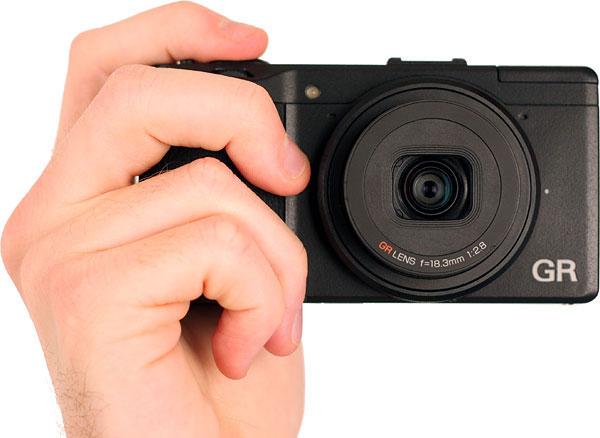 |
The acquisition by Ricoh brought new technologies to the Pentax product line. Mr. Arai pointed to the Ricoh GR line as being the source of new technology that's appeared in recent Pentax models. Once example is the multiple-source white balance capability
found in the K-3. |
DE: You said the GR is not just the name of a camera, but is also the name of a group of technologies?
Ricoh: Yes, GR is the name of the camera; but the GR has unique functions as well - for example, multiple white balance. That technology was originally used on the GR, but is now also available on the new K3.
DE: That was an area where maybe Pentax had a little more trouble in the past, with white balance, especially under strong-hued light sources, but the K3 is now very good.
Ricoh: Thanks very much!
DE: We've also been very, very impressed with the low pass filter simulation on the Pentax K-3. In fact, that received an Award of Distinction in the Technology of the Year category this last year on our website. We had our annual Camera of the Year awards, and gave the K-3's LPF simulation technology an Award of Distinction
So we've been very impressed with it, and I'm curious - can you describe anything about how the idea for that originated, and how it was developed? Can you tell any of that story?
Ricoh: The idea was there many years ago. Because Pentax is using anti-shake technology that moved the sensor itself - unlike other competitors like Canon and Nikon - we had the technical seed for the LPF simulation already. For example, four or five years ago, people didn't so much mind about the moir�, or...
DE: Or getting rid of the low pass filter.
Ricoh: Yes. Recently, Pentax launched the 645 without using AA filters�[anti-aliasing filters, another term for low-pass filters]�and other competitors like the Nikon D800E as well, so the market is now more curious, more �
DE: Interested, focused?
Ricoh: Yes, maybe more aware: The market is already aware that an AA filter is nice, but the AA filter also is a limiting factor on the image quality. That was one of the triggers for us to put that function into the new model.
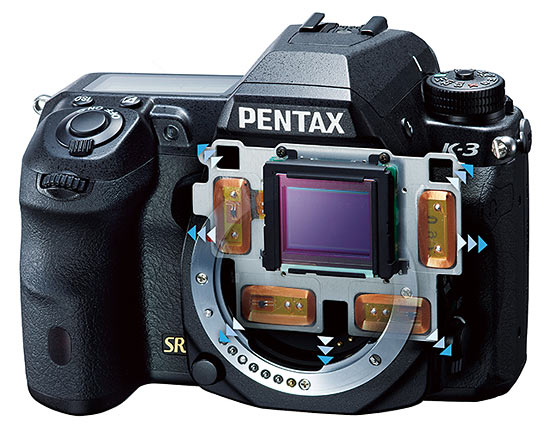 |
| This illustration shows the Pentax K-3's sensor assembly, which "floats" inside the chassis, its precise position controlled via electromechanical actuators (the rectangular, copper-colored coils located to each side and below the sensor itself). These can move the sensor assembly with sub-pixel accuracy. Normally used for Pentax's "SR" shake reduction feature, in the K-3, the sensor-position actuators can also produce the very slight, deliberate blurring needed to emulate a conventional optical low-pass filter. |
DE: It was such different thinking, though - a number of people have the sensor-based IS, but until Ricoh/Pentax did it� Like I said, it's one of those ideas that seem obvious once you've seen it, but to think of doing in in the first place is a real accomplishment.
Ricoh: Also, the K3 is using a special servomotor to precisely control the movement of the IS-cell unit. Without using that, it would have been impossible to implement that function, because it moves while it's doing the anti-shake function -
DE: So it has to execute all the movement required for shake reduction, but also has to super-impose this very high-frequency/low amplitude oscillation on top of that.
Ricoh: Yes.
DE: So, it basically took a different servo controller to be able to do the two at once, is that part of what you're saying? (Note that I'm distinguishing the controller from the motor itself, the servo actuator. It needed a new, stronger actuator but also needed a different controller?
Ricoh: I don't know to what extent I should explain�[expressing concern about going too far into proprietary information],�but what has been changed from the K5 to the K3 is the servo controller and the strength of the magnetics. Because of those two, it's now possible to make that action.
DE: I guess that explains another question I have: Because it requires both stronger magnetics and this special controller, that's not something you can really add by firmware change to previous models.
Ricoh: No, it is hardware related.
DE: Going forward, though, since the drive coils and the circuitry and the controller are already part of your bill of materials, it seems there shouldn't be much additional cost to add that capability to cameras in the future. I'm wondering, can we expect to see that technology show up in entry-level cameras at some point?
Ricoh: We are making an effort to make it cheaper and less costly, because shake reduction by sensor shift is one of our advantages, so we want to have that advantage even on the entry class SLRs. So that is our wish, we'd like to also have it on other levels of cameras for Pentax.
 |
| We captured and analyzed the sounds the Pentax K-3 makes during an exposure. You can see the tiny vibrations from the low-pass filter simulator (antialiasing system) begin just after the mirror opens, and stop after the shutter closes. We measured the vibration frequency at 500 Hz. |
DE: This may be too much technical depth to get into, but we measured the frequency of the oscillation in the K3, and it's right about 500Hz. The system is supposedly usable to 1/1000 shutter speed, and I'm wondering, doesn't it lose some effectiveness at exposure times that short, because it's moving at 500Hz, it doesn't have time to make a full cycle of 1/1000 second? So it's specified to 1/1000 second, but maybe it's not as effective at 1/1000, better at 1/500?
Ricoh: It's true that the unit moves, and it makes a small turn less than 1/1000. If you use a faster shutter speed, then it is still effective, but the effectiveness is less because the exposure finishes before it does a full oscillation.
[This wasn't quite the answer I was looking for, as it didn't really address what would seem to be more limited sensor motion in 1/1000 second. If the frequency of vibration is 500 Hz, and the resulting motion was more or less circular, in 1/1000 second, the motion would trace a semicircle. So you'd have roughly half the anti-aliasing effect you'd get at shutter speeds of 1/500 and below. (Actually, slightly more complicated than that, but you get the idea�) I didn't want to bog the interview down on a fine technical point, though, so moved on.]
Head on over to Imaging Resource to read the rest of the interview, as it's quite long and detailed and packed full of interesting insights and discussions! http://www.imaging-resource.com//news/2014/03/14/ricoh-qa-ricoh-tech-into-pentax-cameras-whither-pentax-full-frame
-----------------------------------------------------------------------------------------------------
FEATURE: What makes the Fuji X-T1 so special? Here's what its designers think...
by Dave Etchells
Fujifilm CP+ Interview: Fujifilm's key goals for the X-T1
While at the CP+ show last month, I had a chance to spend some time with engineers and product planners from Fujifilm. Our conversation covered a wide range of topics, many of which I'll write up as separate articles. A fair bit of our time together was occupied with a presentation they gave me about some of the unique technology in their new X-T1 camera. It's often interesting to hear what product engineers focus their energies on, and how a manufacturer decides to allocate the cost budget for a camera; there's always competitive price pressure, so decisions to invest more in particular aspects of a camera's operation have real consequences out in the market.
Of course, any presentation like this is bound to be strong on high points, rather than any frank assessment of a product's capabilities, but there were nonetheless a number of points that I thought would be interesting to our readers, so I'll share some of them here. There were five primary points the engineers and product planners wanted to call attention to: The X-T1's quiet operation, exceptional EVF, operating speed, weather resistance and WiFi connectivity. Let's take a look at each in turn:
Quiet Operation
While you'd think that the lack of a mirror slapping up and down would mean that all mirrorless cameras would be fairly quiet when operating, there's actually quite a wide range of variation, and the X-T1 is one of the quieter models on the market. The Fujifilm folks showed me some really interesting photos, shot of a baby fur seal by two photographers, one using an X-T1, the other a conventional SLR. I unfortunately can't share the photos with you, because Fuji didn't have a rights release that would let IR publish them as well. The interesting element in these shots was that the photographer using the X-T1 was able to get very close-up photos, with the baby seal facing the camera directly, while all the shots from the photographer using the conventional DSLR were from the side, with the seal looking away. It seemed that the sounds of the conventional SLR made the baby seal nervous, so it wouldn't face the camera/photographer. The X-T1 was so quiet that it wasn't as threat
ening to the young animal.
Most of the time (in the type of photography I'm most likely to do, at least), noise made by a camera is pretty much a non-issue. I'd previously thought of camera noise as perhaps being a concern in candid photography in quiet surroundings, but it hadn't occurred to me to consider how it might impact wildlife photography, mainly because I don't do any of that personally. It's a shame that I can't share any of the seal photos with you, because they made the point pretty dramatically. If quiet operation is a concern, the�Fuji X-T1�is a camera you may want to consider.
Exceptional EVF optics and response time
There's no question that the Fuji X-T1's extraordinary viewfinder is one of its standout features. It's not only very high-resolution, with 2.36 million dots, but is an OLED design for better color and black levels and has a remarkable 5 millisecond lag relative to real-time. The really�hugenews (literally) is just how big the field of view is when looking through it. It has a magnification factor of 0.77x and a 31 degree internal angle of view. How big is that? Compare it the viewfinder on the Sony A99, a full-frame camera noted for having a nice, big display. The A99's magnification factor is 0.71x, and its internal field of view is 31.9 degrees. Turning to other manufacturers,the Canon 6D has a magnification factor of 0.71x and a 33.3 degree angle of view, the Canon 1Dx 0.75x and 35 degrees, and high-end Nikon SLRs (D800, D4S) have a magnification factor of 0.7x (Nikon doesn't seem to specify angular field of view). The X-T1's viewfinder also has nice, high eyep
oint of 23mm, compared to 22mm for the Sony A99, 17mm for the Nikon D800, 18mm for the D4s, 21mm for the Canon 6D, and 20mm for the 1Dx. When it comes to dioptric correction (to allow eyeglass wearers to see a sharp image without their glasses, the -4 to +2 range of the X-T1's finder is bettered only by the Sony A99's -4 to +3 range; the Canon and Nikon models only cover from -3 to +1.
When we first looked through the Fuji X-T1's viewfinder, we were flat-out amazed at how big and roomy it seemed. Were it not for the modest-sized body we were holding, we'd have thought we were using a full-frame SLR. The stats above back this up; its magnification factor and angular field of view are right in line with many full-frame cameras, and its 23mm eyepoint is higher than pretty much any of them, good news for eyeglass wearers.
Beside offering a�big�view, the X-T1's viewfinder is also remarkably sharp and free of distortion, coma, chromatic aberration and other optical artifacts, a testament to the very sophisticated optics Fujifilm built into it. Viewfinder optics actually have a pretty tough assignment to fill, needing to provide a very wide angle of view at very close range, while keeping a reasonable-sized "sweet spot, so your eye won't be restricted to one tiny, very specific location for proper viewing. With constant price pressure from competitors, few camera companies invest much in viewfinder optics. After all, the viewfinder doesn't affect the quality of the final image, and as long as the user can more or less see, well enough to frame the subject, all's good, right?
It may be true that the viewfinder optics don't have anything to do with final image quality, but great VF optics vs lousy ones make an enormous difference in how pleasant a camera is to use, and being able to see the entire frame clearly and without distortion can be critical when you're dealing with tight framing. The X-T1 wins big on this score, and it's interesting to see the lengths Fujifilm went to, to deliver such a great VF experience.
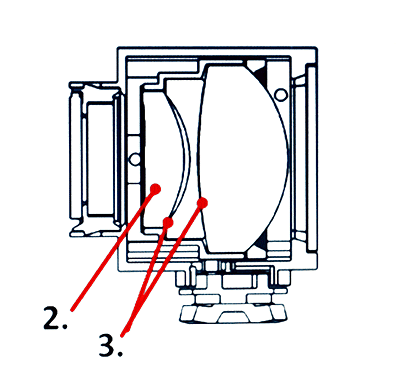 |
The X-T1's viewfinder optics are unusually sophisticated, having three lens elements, one of which (pointed to by the line marked "2" in the illustration) has molded aspheric surfaces on both sides. The number "3" label and lines call attention to points where the element touch each other directly, key to the viewfinder's high magnification and wide field of view.
(Image courtesy Fujifilm, Inc.) |
Ultimately, the story of the X-T1's viewfinder comes down to optics. The screenshot above shows the 3-element optical formula of the X-T1's viewfinder, notable not only for the number of elements, but the degree of curvature of some of them. What you can't see by looking is that all three elements are made of special high refractive index glass to reduce chromatic aberration, and to be able to pack so much magnification into such a small space. (Refractive index is a measure of how sharply a lens can "bend" light rays. High refractive index glass can bend the light a lot more than normal glass, so it's helpful in creating a large magnification ratio in a small volume.)
There are also multiple aspheric surfaces involved; the leftmost element in the diagram above (the one closest to your eye) has two molded aspheric surfaces, to minimize coma aberration and geometric distortion. Coma aberration is the tendency for off-axis points to be imaged as comet-shaped streaks (hence the name). This is a very common failing in viewfinder optics, you'll probably notice it the next time you look through your own camera's viewfinder at objects in the corners of the frame. Besides helping with coma and distortion, aspheric optics also help with curvature of field, so the corners of the viewfinder image will be in focus when the center is. Good flatness of field in the viewfinder optics is obviously important if you're relying on the viewfinder to make broad judgments about what parts of the frame are in focus.
Of course, nothing comes for free, and both high-index glass and (even more so) aspheric lenses are expensive to manufacture, meaning that Fujifilm had to make a clear business decision to make the investment, hoping that users would value the results enough to pay the incremental cost involved.
One point that the Fujifilm engineers emphasized was a little obscure to me - they seemed to attach a lot of importance to the fact that the three glass elements in the X-T1's viewfinder optics touch each other directly. Apparently it's easier and more common to have the lens elements mount individually into the lens barrel or, in this case, viewfinder housing. From what I know of lens manufacture, this is relatively straightforward, because "centering" is a standard part of the lens grinding and polishing process. Centering is a grinding operation that precisely machines the outside edge of the lens so the optical center is exactly aligned with the physical center, and can be accomplished with a high degree of precision fairly easily.
It wasn't entirely clear to me, but I gathered that designing the VF optics such that the three lens elements actually touched each other was key to being able to achieve the high 0.77X magnification factor and wide 31 degree angle of view that are such key parameters.
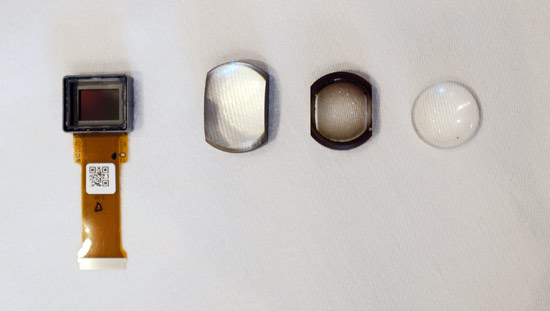 |
These are the four element that make up the "guts" of the X-T1's viewfinder, with the OLED display on the left, and the lens elements arranged in their proper order, with the lens closest to the eye (the one with two aspheric surfaces) on the right.
|
The photo above shows the four pieces making up the guts of the X-T1's viewfinder assembly; the OLED screen attached to its flex-circuit, and the three optical elements. Even in this straight-on view, the extreme curvature of the front-most element (on the left) is obvious.
�
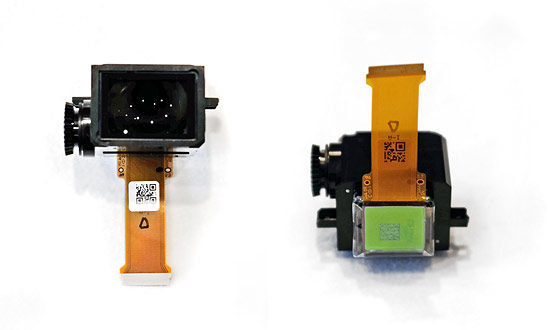 |
Here are two fully-assembled viewfinder modules, the one on the left facing you as it would in the camera, the one on the right providing a rear view.
|
Here's a shot of the assembled viewfinder unit, as it would be mounted in a camera. Amazing that there's so much optical and electronic technology packed into such a small space.
Besides its stellar optical chops, the other very noticeable characteristic of the X-T1's viewfinder is how�fast�it is. Looking through it while panning the camera around or following a moving subject, there's very little visible lag, one of the bugaboos of electronic viewfinders.
I'm a little puzzled by the lag specification for the X-T1's viewfinder, which Fujifilm states as only 5�milliseconds�(0.005 second). On the one hand, it makes sense from the standpoint that data could be transferred from the image sensor to the viewfinder display that quickly, but at the same time, it takes a good bit more than that long to refresh the display, reading out the image from top to bottom. The engineers briefing me gave the maximum EVF frame rate as 54 frames/second, although under lower light conditions, the refresh rate will naturally drop, as the sensor needs a longer exposure to produce a usable image.
So how do you reconcile a lag specification of 5ms with a refresh interval that would be more than three times longer than that, at the very fastest? I think the answer is that the 5ms figure refers to the delay from capturing data from each row of sensor pixels to that row being transferred to the EVF display. This means you'll see a viewfinder image that's updated at whatever the refresh rate is, with the whole image delayed 5ms from real-time as it's being "painted" by the OLED. (Our sample of the X-T1 is in Hong Kong with one of our editors right now; when it gets back to IRHQ, I'm planning a little electro-optical jiggery-pokery to verify the 5ms figure, and understand better how it relates to the update rate.)
Regardless of just how the EVF lag rating is determined, it was immediately clear that the X-T1's viewfinder was very responsive, the first time we looked through it. As noted, stay tuned; we'll have more detail on this in our ultimate X-T1 review, in the fullness of time.
Operating speed
Another key objective of the X-T1 engineering team was operating speed; not only the responsiveness of the viewfinder, but shutter lag, AF speed, predictive AF, shot to shot speed, and very fast writing to the memory card.
Shutter lag when the lens is prefocused (eg, from half-press to full-press of the shutter button is blazingly fast, at just 50 msec (confirmed by our lab tests, which came in at an average of 52 msec). AF speed is specified at just 80 msec, but we need to double-check that number at IRHQ when our sample comes back from Hong Kong with editor Mike Tomkins, as our initial AF times came in a fair bit longer than that. (Our numbers were obtained with the 35mm f/1.4 lens attached, Fujifilm's official numbers were apparently obtained with the 14mm optic. Please reserve judgment in this area until we can re-run these lab tests; the camera has generally seemed pretty responsive in real-world use to date.) Single-frame shot to shot speed is specified at 0.5 seconds, a bit faster than we measured, but we found that it was indeed very fast when writing its buffer memory to a UHS-II SD card; it dumped 23 RAW files to the card in just 8 seconds. Fujifilm also says that the the X-T1 is c
apable of maintaining AF tracking while shooting continuously at 8 frames/second, another claim that we'll need to test explicitly. (For what it's worth, the Fujifilm folks showed me some samples of continuous bursts with a person running directly towards the camera that showed excellent focus tracking.)
The UHS-II spec for SD cards is a relatively new one, promising significantly higher transfer rates than the already-speedy UHS-I spec; the UHS-I spec tops out at a maximum of 104 MB/s, while UHS-II allows for transfer rates as high as 312 MB/s. Currently, only Toshiba offers UHS-II SD cards, under their Exceria brand name, although SanDisk has said they'll begin selling UHS-II cards in the US later this Spring. The thing is, the current generation of Exceria cards from Toshiba top-out at sequential write speeds of just 90 MB/sec, the same speed as SanDisk's highest-end UHS-I cards are capable of. This leaves us wondering whether the X-T1 could actually copy data to the memory card even faster, once faster cards become available.
Weather resistance
Fujifilm's X-series customers apparently have been asking for weather resistance for some time now, so that capability was a key goal of the X-T1 engineers. It's splash-resistant, dust-resistance, and specified to operate in temperatures as low as -10C (14 degrees F).
Something I found interesting was that several lenses that were announced earlier on Fujifilm's X-mount roadmap (the XF18-135mmF3.5-5.6 R OIS WR, the XF16-55mmF2.8 R OIS WR and the XF50-140mmF2.8 R OIS WR) were actually weather-resistant, but that fact wasn't disclosed when they were first announced. The Fujifilm executives said that they wanted to announce the lenses when they did, but didn't want to tip their hands about an upcoming weather-resistant camera body, so they kept the weather-resistant aspect of the lenses quiet, until the X-T1 was finally announced itself.
"Productive remote photography"
These days, WiFi connectivity is pretty much a must for cameras, but there's a lot of variation in how much of a camera's functioning you can actually control, how useful the live view is that's shown on your smart device or computer, etc.
More than just providing basic connectivity, though,the mantra of the X-T1 design team was "productive remote photography." That is, they wanted to deliver a system that would be truly practical for shooting via remote control. As a result, the Fuji X-T1 gives you a much broader range of remote control over it than with many of its competitors, and the remote viewfinder's live view display is quite responsive. When the Fujifilm team demonstrated a phone/camera connection for me, the whole experience was surprisingly quick-footed; establishing the connection between phone and camera was quite fast, the remote viewfinder refresh rate was indeed pretty quick, and image transfers were very fast as well. (By default, Fujifilm's Camera Remote app transfers 3 megapixel versions of the images, more than enough for online sharing. You can also choose to transfer full-resolution versions as well, though.) Touch focus and touch shutter via the phone's screen also seemed to
work very well.
We'll obviously take a deeper look at the X-T1's connectivity as part of our review, but what I saw in the brief demo at the CP+ show was very encouraging.
Summary
So that's what Fujifilm themselves consider most significant about the X-T1. As you can tell from my writeup, I personally found the technology that went into the viewfinder the most impressive, but stay tuned as we update our Fuji X-T1 review, for more details on viewfinder performance, AF speed, and connectivity. (Meanwhile, Editor Mike Tomkins is�actively shooting with it in Hong Kong, so ask any questions about its operation or handling you might like to have answered. He's a good few time zones away from us at the moment, but he'll monitor any questions left below, and answer them as he's able.)
-----------------------------------------------------------------------------------------------------
FEATURE: Sony A7 light leak, final verdict: not a problem for 99.9+% of photographers
by Dave Etchells
We awarded the�Sony A7R�our�camera of the year�award for 2013 because it's a great camera and a technical triumph to boot. So when word cropped up online of significant light leaks in the A7R and its sibling, the A7, we immediately looked into it.
In�part I�of our findings, we found that many cameras leak light at the most extreme exposures, suggesting that the A7 and A7R may not be unusual in this regard. In�part II�we shared some real world photos of the problem and promised to continue our investigation. Finally, in part III below, we'll provide our own real world tests and conclude our findings.
Two leaks in theory, only one in practice
Let's review�some information�published by the indefatigable crew at LensRentals.com. Roger Cicala and company subjected several samples of the Sony A7 to intense light with the camera set to its maximum ISO value and a long exposure, and identified no fewer than three separate light leaks: from the bottom left and top of the flange/body interface and one from the lens release.
For part III we first went about trying to verify Roger's results. We were able to duplicate the bottom left and lens release leaks in worst-case (read: unrealistic) lab testing using a very bright flashlight, but weren't able to duplicate the top leak.
The important takeaway is the only leak we were able to reproduce in real world situations was that from the bottom left. This is the leak producing the characteristic upper-right diagonal light pattern you can see in the blank frame below.
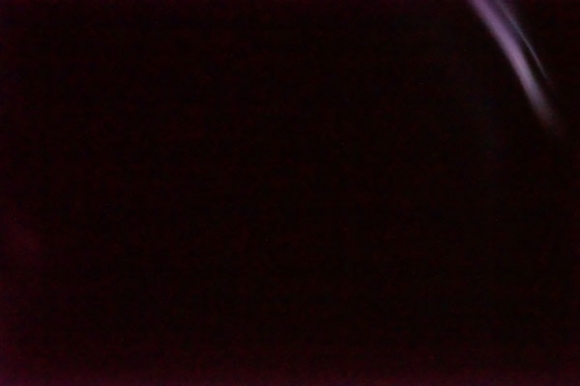 |
Public enemy number one. The bottom left light leak.�
Sony A7, 35mm f/2.8 Zeiss. 30 seconds, ISO 25600, lens cap on.
(indoor with high-intensity flashlight pointed directly at lower left of the flange/body interface) |
This is also the same leak that exhibited itself in real world usage for Satoru Murata below. While we haven't searched exhaustively, all complaints we've seen online center around the same upper right diagonal pattern.
 |
The leak from the lower left of the lens/flange interface is clearly evident.
Sony A7R, Canon EF 17-40 f/4 L on Metabones III. 147 seconds, ISO 50, f/22.
Photo courtesy Satoru Murata. |
Lens release leak MIA in real world
We did manage to find the lens release button leak in our lab tests with a flashlight, with both the 35mm f/2.8 and 28-70mm zoom, but we weren't able to compose a real-world shot where this leak had any effect, despite a good bit of trying, and even with 30-second exposures at ISO 25,600.
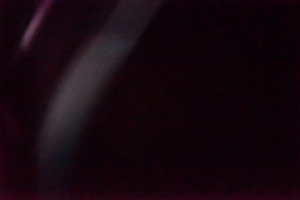 |
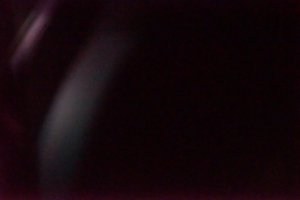 |
| Sony 28-70mm on left, 35mm on right. Both shot at 30 seconds, ISO 25,600, f/22. |
Depends on lens
In very specific circumstances we were able to observe the light leak appearing in the top right of the frame using the 35mm f/2.8 Zeiss lens, but were unable to replicate the problem using the 28-70mm zoom. The first blank frame shown below was taken with a flashlight shining in the lower-left portion of the flange with the 35mm, the second taken under the exact same conditions with the 28-70mm lens.
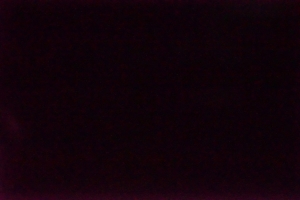 |
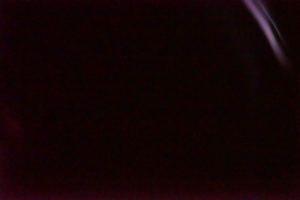 |
Light shining directly on lower left flange/camera interface.
28-70mm on left, 35mm on right. Both shots are 30 seconds, ISO 25,600. |
Roger Cicala's tests were with the 35mm lens as well. The real-world photo above was taken by Satoru Murata with the Canon 17-40mm f/4 L on a Metabones III converter. While the leaks we were able to duplicate with the 35mm and that Satoru Murata encountered in his real world images are between the flange and body of the camera, the issues do seem to depend on the lens used as well. The structure of the 35mm and 28-70mm is a little different and something about this difference seems to reduce the problem.
Angle and aperture, too
Since the leak comes from the camera body and not the lens, the problem is more evident at higher f-stops (where the light coming through the lens is reduced, but that leaking around the flange is not) and is reduced significantly by opening up the aperture. The photo below uses the same crazy ISO, but f/6.3 vs. f/22. Both shots were taken with 16 stops of ND filter in front of the lens.
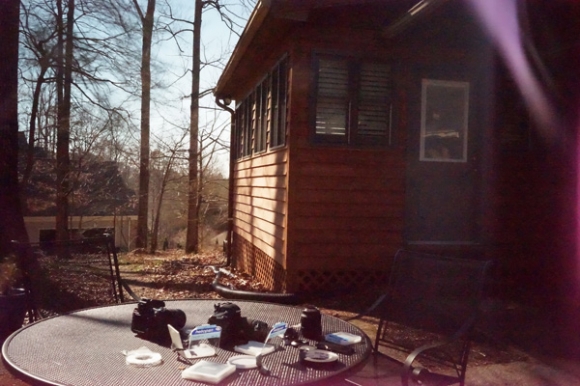 |
This is the worst image we were able to compose.
30 seconds, ISO 25,600, f/22. 16 stops ND. |
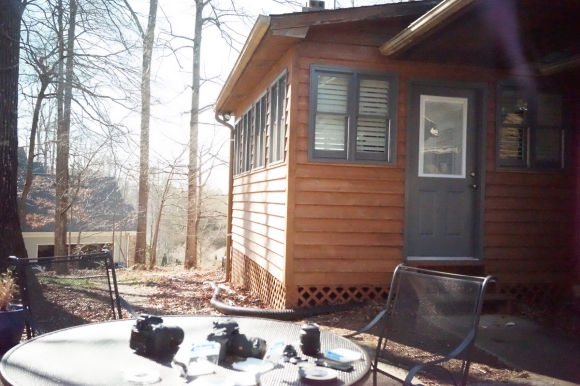 |
| Taking it down to f/6.3 and 13 seconds improved things a lot. ISO still at 25,600. 16 stops ND. |
We also found that the degree of light leak was a strong function of the angle at which light was striking the camera; even with extreme exposures, the effect was very sensitive to the angle of the camera. You can see how the light leak was reduced by changing the angle of the camera in the shots below:
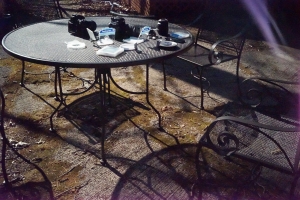 |
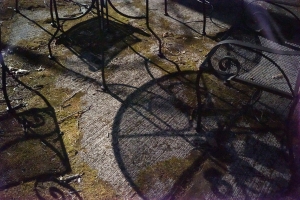 |
Same exposure, different angle.
Both are 30 seconds, ISO 25,600, f/22. 16 stops ND. |
You really have to stack up those neutral density filters
All the real world shots in this post were taken with 16 stops of neutral density filter. It should go without saying, but that's a�lot�of light reduction. If we weren't already sick of the whole thing we would've dialed back the neutral density filtering and taken more test shots to show how the problem decreased.�From that standpoint every one of our 'real world' photos in this post portrays the A7 in unrealistically harsh light.�Wildly unrealistic.�
All examples of the problem (that don't involve shining extremely bright lights into the camera body) we're aware of involve a good deal of neutral density reduction and longer exposures. And most tend towards smaller apertures.
Quick note on the exposure time and ISO setting
We avoided exposures longer than 30 seconds to prevent testing from eating up all day, opting instead to crank the ISO, but the results should be similar for lower ISO shots with equivalently longer exposure times.
Who is likely to be affected
We can say with a good deal of confidence that the only folks who will potentially see this problem manifest itself are those who do very long exposure work in daylight. It's also possible more reflective ground surfaces (snow, sand or water) will cause this to crop up under slightly less extreme conditions, but we still think the problem will be restricted to daylight long exposure work.
In the rare event you encounter the issue, opening up the aperture and decreasing exposure time or ISO will eliminate or dramatically reduce the problem.
Tying it all together
From what we've seen, this is definitely not the end of the world, but something to be aware of if you do super long exposure daylight work. We can't anticipate all possible shooting scenarios or applications, but from what we've observed, 99.9+% of photographers will never encounter an issue with either the A7 or the A7R.�
We understand that this might be an issue for long-exposure daylight shooters, but apart from the legitimate concerns of that community, this looks to us like a bit of a tempest in a teapot.
-----------------------------------------------------------------------------------------------------
QUICK HITS
-------------------
First Shots Galore! Nikon D4S, Sony A5000 and Fujifilm XQ1
Nikon D4S: You make the call - Is the D4S the fairest of them all? Nikon D4S First Shots posted (w/ISO 409,600!)
The�Nikon D4S�has an interesting dilemma: there are no other cameras in our�Comparometer�that go up to ISO 409,600, and therefore no competition to duel in that premium high altitude. Ah well, there are still a myriad of intriguing comparisons for you to make with our lab test�First Shots�from Nikon's flagship professional DSLR.
For starters, we're sure there are many of you interested in seeing how the D4S stacks up to the�Nikon D4, and perhaps the D3X�as well. Others may want to size it up to the�Canon 1DX�at ISO 204,800, or to the new full frame mirrorless�Sony A7R, now known for its exceptional image quality at base ISO.
To pique your curiosity, below is a side-by-side from our�Comparometer�at ISO 12,800 shot with the Canon 1Dx and the Nikon D4S and zoomed in to full resolution. This handy tool lets you get down to the nitty-gritty at any ISO to determine just how high the cameras can go before noise levels start to take their toll on the overall image quality.
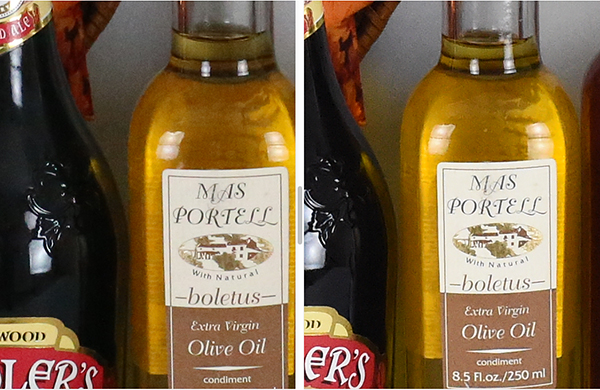 |
| Canon 1DX � � � � � � � � � � � �ISO 12,800 � � � � � � � � � � � � � �Nikon D4S |
---
Sony A5000: Does an NEX by another name still shoot as sweet? First Shots with the Sony A5000
The confusion caused by Sony's dropping of the "NEX" branding from their popular mirrorless APS-C lineup has apparently done little to quell the photo community's enthusiasm about the line itself, as the�Sony A6000�has been one of the most read-about cameras on our site since it was announced last month.
Those of you interested in the A6000 have but a few more weeks to wait, as we expect the highly awaited follow-up to the�Sony NEX-6�to arrive at our lab shortly, but in the meantime its little brother the�Sony A5000�has just made its initial round through our lab and now has�First Shots�posted.
A blend of the price-friendly�NEX-3N�and the middle-of-the-line�NEX-5T, the A5000 nevertheless sports a new 20.1 megapixel sensor and the same renowned BIONZ-X image processor housed within the Sony A7, A7R and RX10. With this inner pedigree, it would be logical to assume better image quality is possible than achieved by its forebears, but lab test comparisons are the only way to know for certain, so make sure and visit our�Comparometer�to compare the A5000 to its NEX predecessors, or any other camera we've ever teste
d.
---
Fujifilm XQ1: First shots posted
Fuji's 2/3" sensor is relatively large for a compact camera, and yet, the�Fujifilm XQ1�is "the most portable X-series camera ever developed" according to Fuji. We were wowed enough with the clever and cool little�XF1�that we awarded it a Camera of Distinction in our pocket camera category last year, so we were naturally eager to get our hands on Fuji's latest entry in the pocket category and get it into our lab for testing.
For anyone interested in how this little guy stacks up, we've just posted our lab�First Shots,�which allow you to take a closer look and, just as importantly, use them to compare the XQ1 to any other camera we've ever tested in our�Comparometer.
How does it stack up against Fuji's own XF1? Or how about the Canon S120, the Panasonic LF1 or the Sony RX100 II? The�Comparometer�is your best bet for solving these and any other questions you may have for image quality comparisons all the way up the ISO scale.
---
Farewell to flare? Pentax's HD Limited lens lineup gets a real-world test
by Mike Tomkins
Back in late 2012, Pentax�introduced a new multi-layer lens coating dubbed HD, for "High Definition". According to its maker, the HD coating offered a couple of key benefits, but it's not until recently that we've been able to make a real-world comparison to test these claims. We've now done so, and the results are rather interesting.
When it launched the HD coating, Pentax promised that it would be more durable, yield better color balance and better control reflections, a key to reducing lens flare. The company predicted a better than 50% reduction in reflections across the entire visible spectrum, so we were led to expect a pretty significant improvement -- but at the time there was no way to make a direct comparison against a non-HD coated lens. More recently, though, Pentax has also updated its entire DA Limited lens lineup with the new HD coating, and as it happens, I own a couple of the original, non-HD versions of the same lenses. A comparison was clearly in order, then.
Shortly before departing on vacation to Hong Kong, I tried a few different tests, shooting my own non-HD glass side-by-side with the new HD variants using our review sample of the�Pentax K-3�body. First of all, I shot some images right near sunset in downtown Knoxville, Tennessee, intentionally provoking lens flare by keeping the sun fairly close to the image frame. I also took some shots of nearby brick buildings with a vast array of rooftop airconditioners, providing lots of fine detail. And then I took camera and lenses back home for some bokeh testing, given that the newer lenses are also said to have rounder aperture blades.
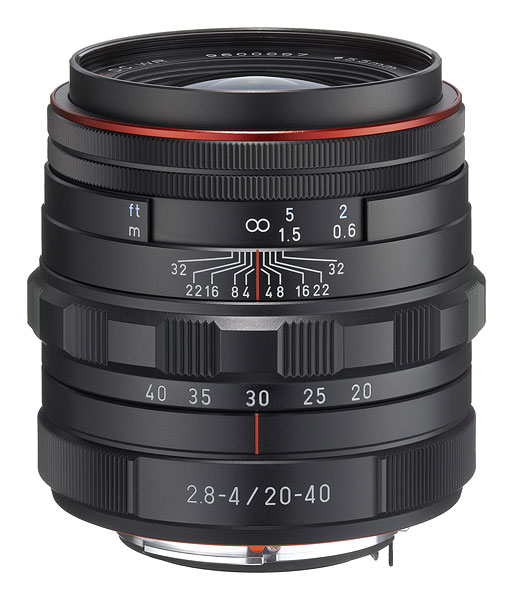 |
| Pentax's overhauled DA Limited lineup includes a 20-40mm f/2.8-4 lens, the first in the family to feature either weather-sealing or an optical zoom. |
While I was at it, since we had the entire HD lens lineup -- including�the new�HD Pentax DA 20-40mm F2.8-4 ED Limited DC WR, the company's first Limited lens with optical zoom or weather sealing -- I also took similar shots with every other optic in the family. (For the 20-40mm lens, I repeated each shot at wide angle and telephoto.)
You can find the�results from all six lenses in the gallery�of our�Pentax K-3 review. Reduced resolution, side-by-side comparisons of the two lenses I own (the�smc PENTAX DA 21mm F3.2 AL Limited and�smc PENTAX DA 40mm F2.8 Limited) against their newer HD-coated equivalents follow below. I didn't note significant difference in terms of detail or bokeh -- perhaps a very slight reduction in sharpness, but despite focusing in live view in live view mode with contrast detection, focus isn't in precisely the same place, so it's hard to call. As you can see, though, there's a very worthwhile improvement in flare for both of these lenses.
Admittedly, this was a rather extreme test, and intentionally so. Were I to buy either lens today, though, I think I'd definitely look to pick up the HD versions, even if the improvement probably isn't enough to make me sell my existing non-HD lenses and trade up. See the�Pentax K-3 gallery�for the full-resolution images.
Flare comparison
(full images have been reduced to 600px)
 |
smc PENTAX DA 21mm F3.2 AL Limited
Note strong lens flare at left, and in front of left building. |
 |
HD PENTAX DA 21mm F3.2 AL Limited
Ugly lens flare is mostly gone, and contrast / saturation at left are improved somewhat. |
 |
smc PENTAX DA 40mm F2.8 Limited
Note reduced contrast and saturation at left, and also in the dark windows of the building. |
 |
HD PENTAX DA 40mm F2.8 Limited
Contrast and saturation are noticeably improved by the HD lens coating. |
Detail comparison
(100% crops from each image)
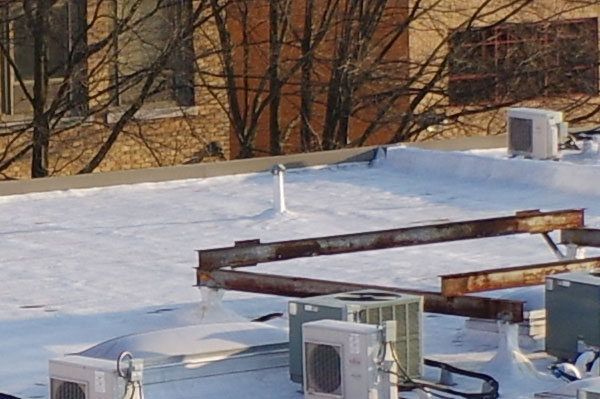 |
| smc PENTAX DA 21mm F3.2 AL Limited |
 |
| HD PENTAX DA 21mm F3.2 AL Limited |
 |
| smc PENTAX DA 40mm F2.8 Limited |
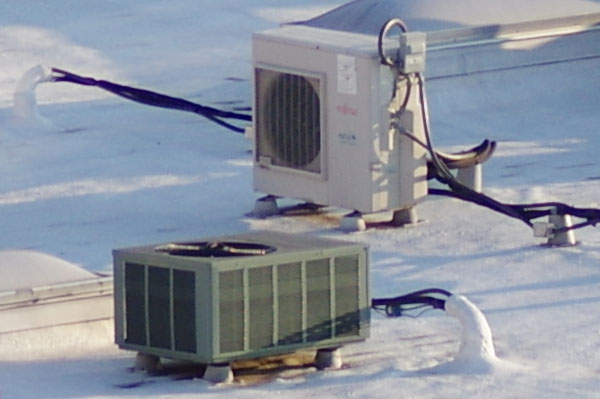 |
| HD PENTAX DA 40mm F2.8 Limited |
Bokeh comparison
(50% crops from each image)
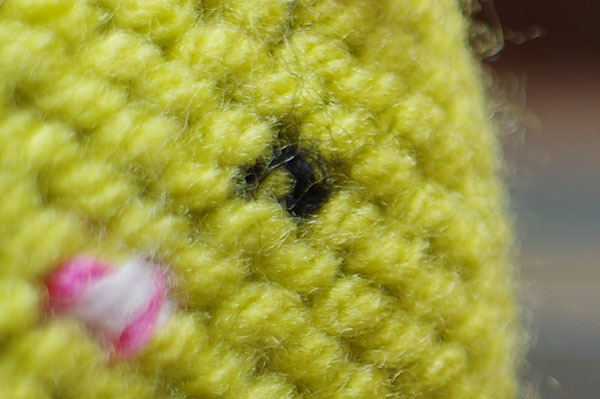 |
| smc PENTAX DA 21mm F3.2 AL Limited |
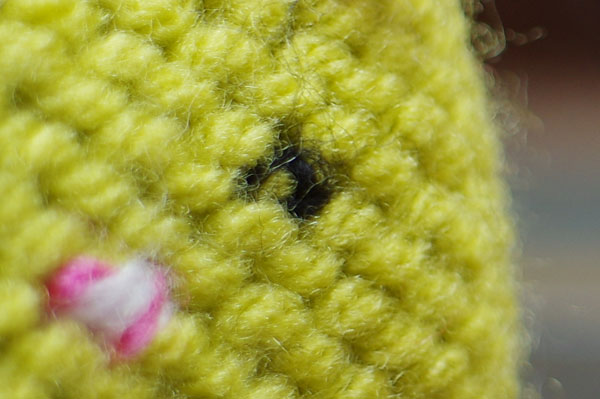 |
| HD PENTAX DA 21mm F3.2 AL Limited |
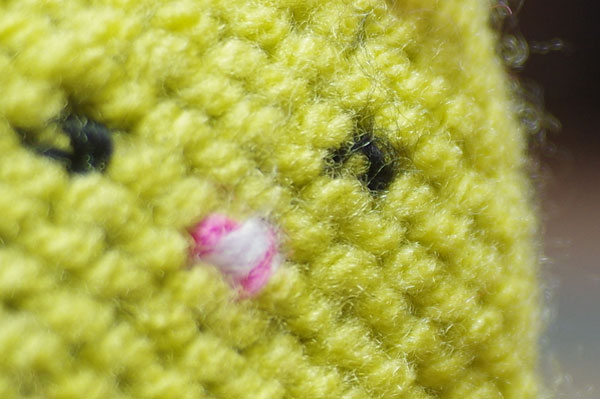 |
| smc PENTAX DA 40mm F2.8 Limited |
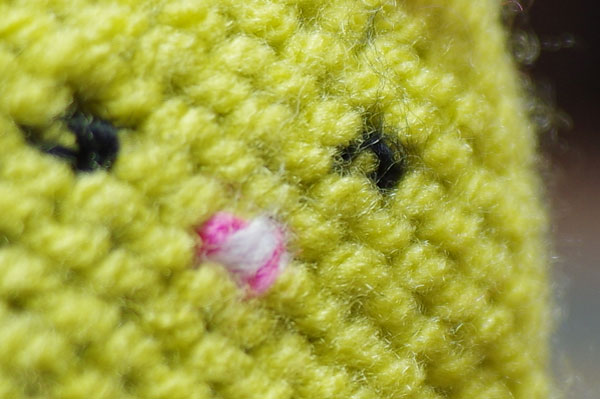 |
| HD PENTAX DA 40mm F2.8 Limited |
-----------------------------------------------------------------------------------------------------
POPULAR ON THE SITE
---------------------------------
At http://www.imaging-resource.com/news you can keep track of the photo news on our main site. Among the most popular stories over the last couple of weeks:
New Product Announcments:
- Nikon 1-series to �get its due recognition' as flagship V3 mirrorless camera unveiled (http://www.imaging-resource.com/news/2014/03/13/Nikon-1-series-to-get-its-due-recognition-as-flagship-V3-mirrorless-camer)
- Samsung announces the NX Mini - The thinnest & lightest ILC on the planet! (http://www.imaging-resource.com/news/2014/03/18/samsung-announces-the-nx-mini-the-thinnest-and-lightest-ilc-on-the-planet)
- Samyang announces new 12mm f/2 ultra wide-angle lens for mirrorless cameras, updates older models (http://www.imaging-resource.com/news/2014/03/21/samyang-announces-new-12mm-f-2-ultra-wide-angle-lens-for-mirrorless-cameras)
Photo News:
- Pop Photo spotlights self-portraits, but don't call them selfies (http://www.imaging-resource.com/news/2014/03/21/pop-photo-spotlights-self-portraits-but-dont-call-them-selfies)
- Road & Track posts an inside look at shooting Sebring auto race(http://www.imaging-resource.com/news/2014/03/20/road-track-posts-an-inside-look-at-shooting-sebring-race)
- New York Times profile offers a peek into world of Arab photography (http://www.imaging-resource.com/news/2014/03/19/new-york-times-profile-offers-a-peek-into-world-of-arab-photography)
- If you could give one sentence of advice to photographers, what would it be? (http://www.imaging-resource.com/news/2014/03/18/if-you-could-give-one-sentence-of-advice-to-photographers-what-would-it-be)
- DxOMark dissects Nikon 1 V3, sees no great improvement from previous generations (http://www.imaging-resource.com/news/2014/03/20/dxomark-dissects-nikon-1-v3-sees-no-great-improvement-from-previous-generat)
- The internet's coolest great-grandma rocks Instagram to help her fight cancer (http://www.imaging-resource.com/news/2014/03/19/the-internets-coolest-great-grandma-rocks-instagram-to-help-her-fight-cance)
- Sony A7, A7r firmware update improves AF speed (but only for an unreleased lens), improves image quality (http://www.imaging-resource.com/news/2014/03/19/sony-a7-a7r-firmware-update-boosts-af-speed-improves-image-quality)
- Calumet Photographic suddenly declares bankruptcy, closes stores (http://www.imaging-resource.com/news/2014/03/13/calumet-photographic-suddenly-declares-bankruptcy-closes-stores)
- More information comes to light about the last days of Calumet (http://www.imaging-resource.com/news/2014/03/14/more-information-comes-to-light-about-the-last-days-of-calumet)
----------------------------------------------------------------------------------------------------
NEXT ISSUE
---------------
We'll see you next on April 4, with a regularly scheduled edition (and lots more news and analysis to share)!
SIGNOFF
-----------
That's it for now, but between issues visit our site for the latest news, reviews, or to have your questions answered in our free discussion forum. Here are the links to our most popular pages:
Newsletter Archive: http://www.imaging-resource.com/cgi-bin/dada-nltr/mail.cgi/archive/irnews
Daily News: http://www.imaging-resource.com/news
SLR Gear: http://www.slrgear.com
New on Site: http://www.imaging-resource.com/new-on-ir
Review Index: http://www.imaging-resource.com/camera-reviews
IR Photo Contest: http://www.dailydigitalphoto.com
Google + http://plus.google.com/+imagingresource
Facebook: http://www.facebook.com/imagingresource
Twitter: http://www.twitter.com/IR_Lab
Happy snapping!
Dave Etchells & the IR Editorial Team
editor@imaging-resource.com
| 
